 By Liz Dampsey, MA, RSMT
By Liz Dampsey, MA, RSMT
Equine-Assisted Psychotherapist
Attempting to explain somatic/equine therapy to a friend, I found myself searching for the words to describe this predominantly non-verbal intervention. Thinking about the work I am blessed to do every day elicited a slew of sensations that originated in my heart area and moved throughout my system. My friend, who saw me groping for words, said, “Isn’t it somatic just to work with a horse?” What a brilliant question, I thought, yet wasn’t surprised coming from the intuitive somatic practitioner she is.
This type of work necessitates a clarification of the term somatic, which essentially involves an increase of awareness through bodily expression and sensation. From a mental health perspective, this awareness can inform emotional processes and psychological development. The other part of her question/statement—how working with a horse is somatic in and of itself—warrants a multidimensional answer.
Due to their biological makeup, horses naturally and instinctually function from their intuitive and bodily sense. These powerful, yet vulnerable, prey animals have a large limbic system, the part of the brain responsible for emotion and intuition, which greatly contributes to their keen ability to detect danger. Horses often act from their instincts to fight or flee based on what is present in their environment. Horses do not think in terms of language, but rather feel the energy within and around them. They are emotionally intelligent and acutely aware of the slightest gesture, body posture, tone of voice, or glance emanating from a human or any other species. Thus, they have a heightened sensitivity to human emotion, which is what they are most attuned to when around us, including those emotions that are often out of our conscious awareness. They respond to our behavior and feelings through their body language, which is clear and immediate; thus, they can teach us how we impact those around us.
In addition to the horse’s inherent therapeutic and somatic-based qualities, somatic equine therapy also incorporates principles and techniques from Somatic Experiencing® (SE), a psychobiological model of trauma resolution that is also effective for relieving chronic stress. One of the main tenets of SE is self-regulation of the autonomic nervous system (ANS), which includes the natural oscillation between sympathetic and parasympathetic activation. Based on the Polyvagal Theory developed by Stephen Porges, PhD, this includes regulating both body and behavior states, as well as engaging socially with others in effective and affirming ways. This theory emphasizes the two branches of the vagus nerve: dorsal and ventral. Whereas the ventral vagus involves the parasympathetic system related to calm behavioral states often associated with safe social engagement with others, the dorsal vagus is associated with the immobilization system otherwise known as the freeze state. Additionally, the activation of the sympathetic nervous system that promotes fight-or-flight behavior is known as the mobilization system. Ideally, the ability to self-regulate occurs when the sympathetic activating system (fight/flight) and the calming, parasympathetic system can physiologically engage when needed based on visceral states, environmental stimuli, and social interactions.
When horses are raised successfully, they instinctively know how to self-regulate. The fear response to a potential threat will activate a horse’s sympathetic nervous system, much like a human. However, once the horse perceives there is no real threat, their parasympathetic nervous system will activate, leading to reduced sympathetic activation, and they will readily return to a relaxed state. This is not always the case for humans because our rational brains often override our natural impulses.
One potential benefit of somatic equine therapy is orienting to a powerful, vulnerable animal that readily exhibits the natural oscillations between sympathetic and parasympathetic states. One minute it is on alert, eyes and ears scanning the environment for a potential danger it may have sensed, and the next minute its head lowers and the horse is back to grazing. Orienting is an SE technique that elicits parasympathetic activation and involves focusing on something in the environment and then tracking associated body sensations. Orienting to a physically beautiful, self-regulating being has great potential in terms of cultivating calming states in humans. Furthermore, by tracking the associated sensations, we facilitate a settling in our own nervous systems.
The emphasis on tracking body sensations can be particularly beneficial during successful completion of horse-handling tasks. Learning to clearly communicate with horses involves awareness of our thoughts, intentions/feelings, and the body language we use to convey what we are asking. The ability to clearly and congruently communicate with a horse can be quite empowering for many people dealing with mental health issues, and can help cultivate a sense of self-efficacy in other areas of one’s life. Accessing that sense of self-efficacy through body sensations can serve as a therapeutic anchor and facilitate self-regulation of the nervous system.
Additionally, communicating with horses involves pressure and the release of pressure, which mirrors nervous system oscillation. Whereas applying pressure requires more sympathetic activation (increasing our internal energy through body language to ask the horse to trot rather than walk); the release of pressure involves a deactivation as we communicate to the horse that he or she obliged our request.
Another important benefit of somatic equine therapy lies in the rich relationships humans tend to develop with horses. Not only are horses emotionally attuned, but their intuitive functioning bestow them an implicit appreciation of social engagement and attachment with members of their herd and, at times, members of the human herd. As mentioned earlier, the ventral vagus involves social engagement, which develops through attachment experiences early in life and aids in establishing self-regulatory capacities. Connecting with a horse can provide an opportunity for social engagement/attachment that can lead to growth in terms of physiological and effective self-regulation.
Thankfully, new research is emerging that explores the effects of equine-facilitated psychotherapy on physiological and psychological changes in humans. These studies are seeking to understand how horses help humans to regulate their own systems, including their emotional, physical, and behavioral responses. The experience of being with horses and doing this work is awe-inspiring, therapeutic, magical, and grounding.













